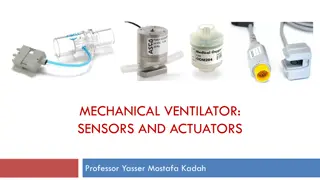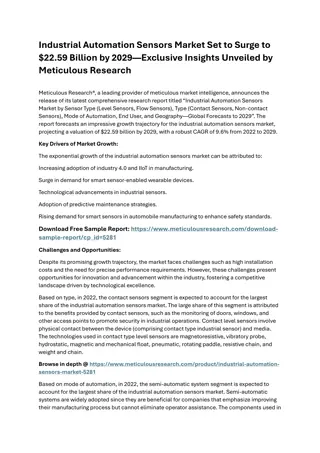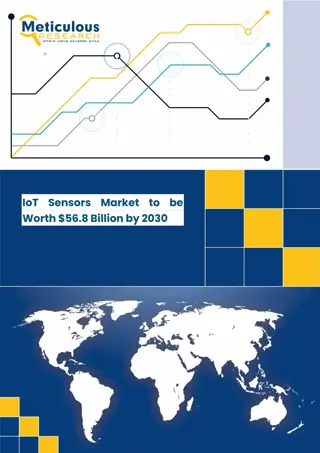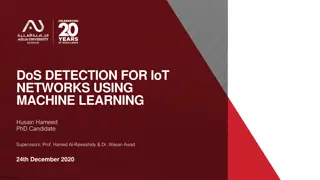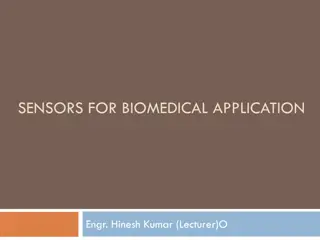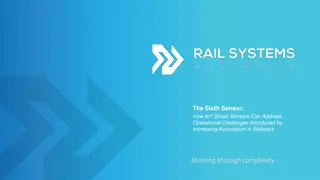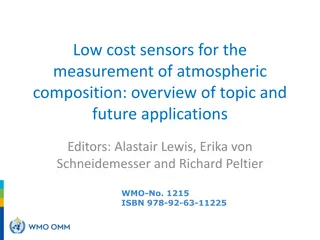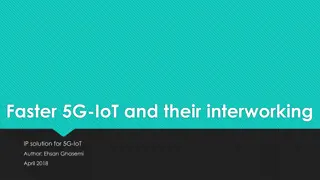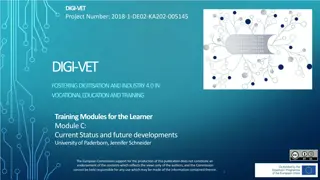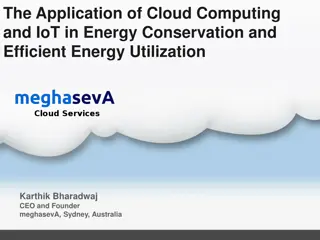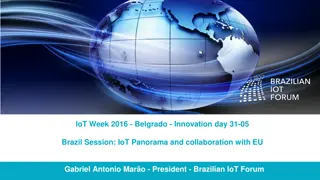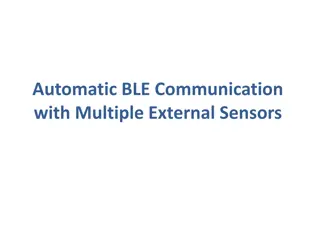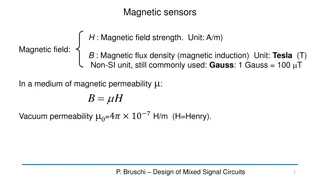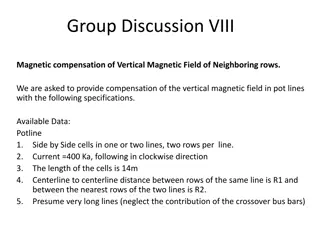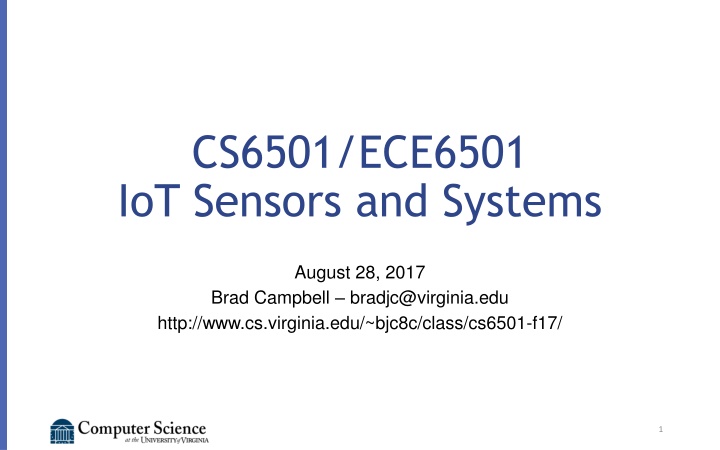
IoT Sensors and Systems Research Overview
This presentation covers key topics including research problems, Heilmeier Catechism, Allen Newell's research style, and the essence of good science in addressing real-world problems with detailed models for the IoT domain.
Uploaded on | 0 Views
Download Presentation

Please find below an Image/Link to download the presentation.
The content on the website is provided AS IS for your information and personal use only. It may not be sold, licensed, or shared on other websites without obtaining consent from the author. If you encounter any issues during the download, it is possible that the publisher has removed the file from their server.
You are allowed to download the files provided on this website for personal or commercial use, subject to the condition that they are used lawfully. All files are the property of their respective owners.
The content on the website is provided AS IS for your information and personal use only. It may not be sold, licensed, or shared on other websites without obtaining consent from the author.
E N D
Presentation Transcript
CS6501/ECE6501 IoT Sensors and Systems August 28, 2017 Brad Campbell bradjc@virginia.edu http://www.cs.virginia.edu/~bjc8c/class/cs6501-f17/ 1
Outline Picking research problems Things to keep in mind Computer science issues in ubiquitous computing and the IoT 2
The Heilmeier Catechism George H. Heilmeier Director of DARPA, 1975-1977 Invented LCD displays DARPA funds research projects But which ones to take risks on? 3
The Heilmeier Catechism What are you trying to do? Articulate your objectives using absolutely no jargon. How is it done today, and what are the limits of current practice? What is new in your approach and why do you think it will be successful? Who cares? If you succeed, what difference will it make? What are the risks? How much will it cost? How long will it take? What are the mid-term and final exams to check for success? 4
Allen Newell Researcher at CMU Pioneer in Artificial Intelligence Turing Award winner Developed pre-cursor to Lisp 5
Allen Newells Research Style Good science responds to real problems Good science is in the details Good science makes a difference 6
Good science responds to real problems Good scientific problems are those that reflect real phenomena in the world. Real problems that need to be solved. Clear statement of the real phenomena or application it addresses. 7
Good science is in the details Takes the form of a working model The artifact is about understanding, not building Must build when analysis is too complex Includes detailed analysis or implemented models Allows others to benefit from work at an abstract level Enables comparisons between different approaches 8
Good science makes a difference Measures of contribution: How it solves a real problem How it shapes the work of other Solves a real problem The problem sets the crucial context for the work A million ideas to pursue, but which ones are worth doing? Shapes the work of others Highest goal: change other people s thinking Paradigm changes are the most impactful [Kuhn] 9
Outline Picking research problems Things to keep in mind Computer science issues in ubiquitous computing and the IoT 10
Mark Weiser Who is Mark Weiser? Researcher at Xerox PARC Father of ubiquitous computing Work is incredibly influential What are the principles of ubiquitous computing? The purpose of a computer is to help you do something else. The best computer is a quiet, invisible servant. The more you can do by intuition the smarter you are; the computer should extend your unconscious. Technology should create calm (technology that doesn t demand our focus or attention). 11
Hypothesis of the article? Advances in low power hardware, low power wireless radios, UI hardware, and networking protocols will enable invisible computing and enable office workers to be more effective. 12
Approach in the CSL at PARC The research method of ubiquitous computing is standard experimental computer science: the construction of working prototypes of the necessary infrastructure in sufficient quantity to debug the viability of the systems in everyday use. A key part of our design philosophy is to put devices in everyday use, not just demonstrate them. This exposes challenges that wouldn t otherwise appear. 13
Weisers Vision Are we there yet? For each person: Hundreds of Tabs Tens of Pads One or two Boards Migrating displays Collaborative editing Real-time people maps 14
The computer science of Ubicomp Low power computer architecture Vastly improved, but work still continues today Wireless radios Metric: bits/sec/m3 --> better bandwidth in close proximity Pen hardware How to write on walls? Wireless MAC Lot of WSN research focused on this topic Networking High-speed (many small devices add up!) Real-time Mobile 15
What issues are still issues today? Need for energy-efficient hardware and sensors Wireless radio technologies Privacy preserving techniques for user data Human interaction patterns 17
What new issues characterize the IoT? Issues of heterogeneity Communication Management and discovery Secure systems Programming models Distributed or cloud based 18
For Wednesday Two reviews An Analysis of a Large Scale Habitat Monitoring Application Information Bang for the Energy Buck: Towards Energy- and Mobility-Aware Tracking Email them to bradjc@virginia.edu Come prepared to discuss, critique, and debate 20

